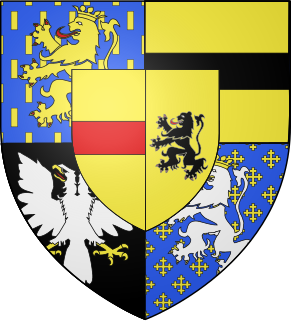| Anna Maria of Hesse-Kassel | |
|---|---|
| Born | 27 January 1567 Kassel |
| Died | 21 November 1626 (aged 59) Neunkirchen |
| Buried | Saarbrücken |
| Spouse(s) | Louis II, Count of Nassau-Weilburg |
| Father | William IV, Landgrave of Hesse-Kassel |
| Mother | Sabine of Württemberg |
Anna Maria of Hesse-Kassel (27 January 1567, Kassel – 21 November 1626, Neunkirchen) was a princess of Hesse-Kassel by birth and by marriage Countess of Nassau-Saarbrücken.

Kassel is a city located on the Fulda River in northern Hesse, Germany. It is the administrative seat of the Regierungsbezirk Kassel and the district of the same name and had 200,507 inhabitants in December 2015. The former capital of the state of Hesse-Kassel has many palaces and parks, including the Bergpark Wilhelmshöhe, which is a UNESCO World Heritage Site. Kassel is also known for the documenta exhibitions of contemporary art. Kassel has a public university with 25.000 students (2018) and a multicultural population.

Neunkirchen is a town and a municipality in Saarland, Germany. It is the largest town in, and the seat of the district of Neunkirchen. It is situated on the river Blies, approx. 20 km northeast of Saarbrücken. With about 50,000 inhabitants, Neunkirchen is Saarland's second largest city.

The Landgraviate of Hesse-Kassel, spelled Hesse-Cassel during its entire existence, was a state in the Holy Roman Empire that was directly subject to the Emperor. The state was created in 1567 when the Landgraviate of Hesse was divided upon the death of Philip I, Landgrave of Hesse. His eldest son William IV inherited the northern half of the Landgraviate and the capital of Kassel. The other sons received the Landgraviate of Hesse-Marburg, the Landgraviate of Hesse-Rheinfels and the Landgraviate of Hesse-Darmstadt.













